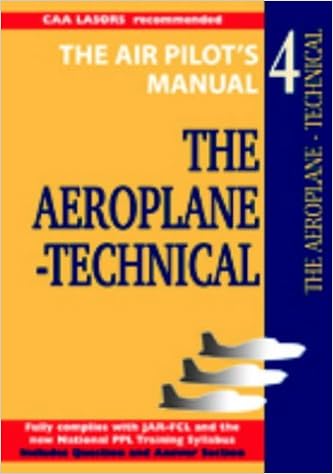So, I’m planning to do some higher speed runs next time out and have already set Ch6 to WPNAV_SPEED (from 5-25 m/s), but I’m curious to what to expect when it reaches max performance?, Arduplane, for example, will dive (somewhat gently), if you forgot to take the pitot cover off and it can’t reach the desired speed. (don’t ask me how I know this).
Depends on if you plan to make turns on your auto flight and how much power you got.
It would be better to fly a few high speed runs in Alt Hold first to see if the Alt Hold angle limiter is going to kick and limit what the heli can do. There’s a problem with it in 3.5.4. If you can’t seem to get any acceleration and it won’t bank into a turn, chances are it’s the problem with the Alt Hold angle limiter. It’s important to make sure that works because skidding around corners or tail turning at high speed is not very good.
Other than the autopilot accelerations being excessively rough once you get WPNAV_ACCEL up for high speed, there is no problem with the autopilot handling the heli in steady speed flight. Once you get 'er cranked, alternative to using the WPNAV_SPEED knob to slow down, you can just flip into Stabilize and let it coast and bleed off speed by itself. Then peel off from the mission track and fly it home. That’s way smoother. And what I would recommend until you get a “feel” for how the autopilot is going to handle it in the pitch axis when it comes to changing speed. Try it at like 40 mph first and try slowing down with the WPNAV_SPEED with WPNAV_ACCEL set to maybe 350-400. Then turn WPNAV_ACCEL up to 500-600 and try it again. You’ll see what I mean.
Watch the heli’s ground track until you get used to that too. It won’t hit the waypoints once you get the speed up and will cut them way short. Make sure you got plenty of wide open room so you don’t run into something with it until you figure out what you need for WPNAV_ACCEL to kinda sorta get it to track waypoints in high speed flight. You never will get it to actually hit the waypoints much past 45 mph, if you have some high-G turns in your flight plan. It doesn’t fly waypoints like Plane does.
It’s for my Protos 500, so it got about 1700w if needed. It’s also fairly bloated at 3kg AUW with all the gear on it.
I was planning on setting up a large figure-8 automission and then crank up the speed.
I have a spread of head speed settings as well to play around with. Good tip on switching into stabilize for ending the mission. I have been using auto-landings (they’re really neat!) but that has been at quite slow speeds, so the deceleration have always been reasonable.
It will still be reasonable if you leave WPNAV_ACCEL alone. But then the helicopter won’t hit the waypoints as you turn up the speed. You’ll see how it works.
That’s fine…it’s more of a ‘how fast can it go’ kinda test. (whilst still maintaining some sort of resemblance of control)
How fast will it go will totally depend on headspeed and power. It will use up left aileron with a clockwise head as you go faster. 400 fps blade tip speed is good for ~60 mph (with normal roll control).
Still being rather ignorant about helicopter dynamics: Higher tipspeed (to a point) = higher top speed?
I would need to crank up the RPM a fair bit (~2600rpm vs the 2200 I’m currently running).
Actually, is there any books similar this for helicopters?

Don’t know if these were ever published in the US (I got my PPL in the UK), but it’s a basic technical aeroplane study book. I did some googling for helicopter books, but they were either very advanced or a complete ground school course.
Yeah. If you run the head too slow you’ll run out of left aileron at higher speeds. The heli wants to roll right the faster you go with a clockwise head. When you start using aileron to keep it wings level then your roll control gets compromised, and eventually the heli will roll to the right and nose up, which slows it and it recovers. It’s just like an airplane stalling the wing. Leave it alone and all Type Certiifcated airplanes will recover by themselves. Helicopters do too.
The phenomenon is called Retreating Blade Stall, caused by the advancing blade running at more ideal AoA and higher relative airspeed. The retreating blade runs at the maximum pitch in the rotational cycle, and at lower relative airspeed than the advancing blade. So when it reaches critical AoA, it stalls. So the disc loses lift on the right and rear, causing the heli to roll right (clockwise head) and nose up. It’s not really a big deal. The autopilot actually handles it pretty well. The heli automatically slows when it happens and it recovers instantly. Then you turn up a headspeed a bit more. The lift from your main increases approximately with the square of the rotor speed. So if you’re going to fly fast forget about low headspeed stuff and flight time. You need power. 
The FAA in the US publishes a complete handbook to helicopter dynamics for pilots studying for their Private or Commerical ticket
https://www.faa.gov/regulations_policies/handbooks_manuals/aviation/helicopter_flying_handbook/
Hah, perfect thanks!
So, finally got a weather window!
Was fairly cautious going from 5-14m/s at ~2170rpm and it flew like a champ!. Still need to work on the gimbal, etc, but super happu with how the heli is flying.
Also ran a mapping mission, which was equally flawless.